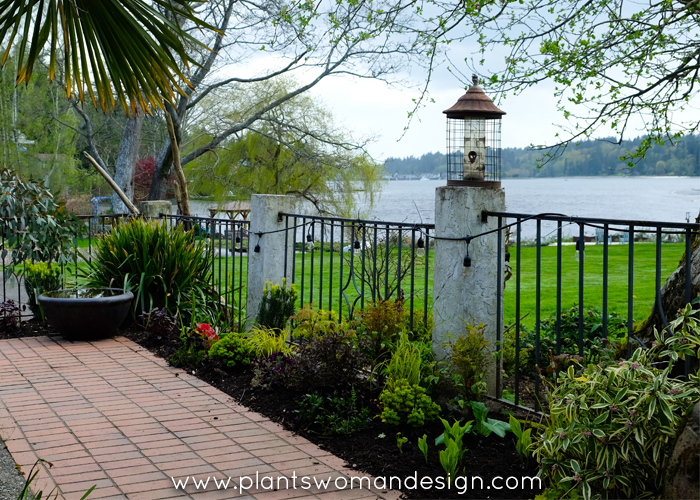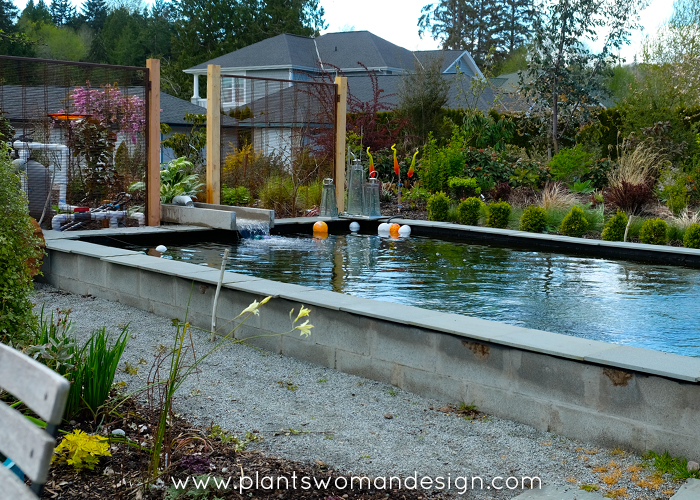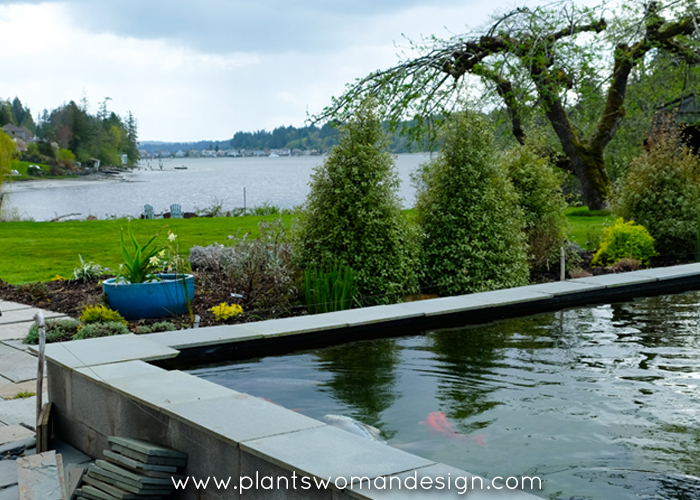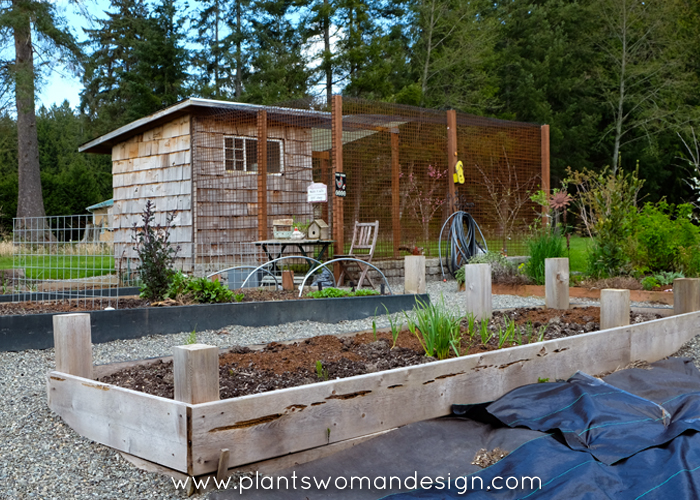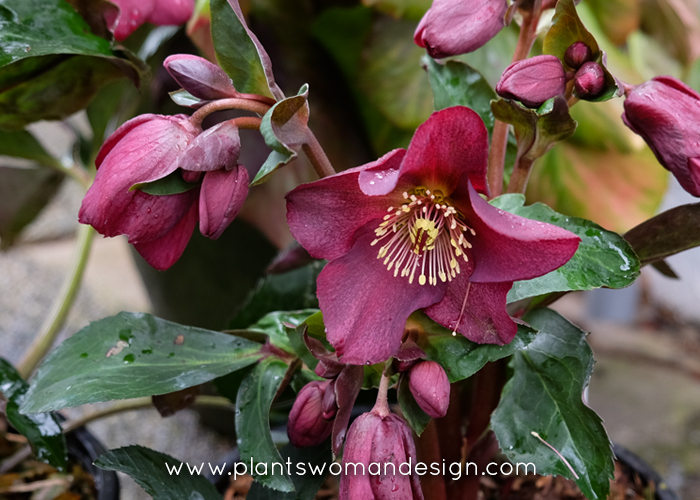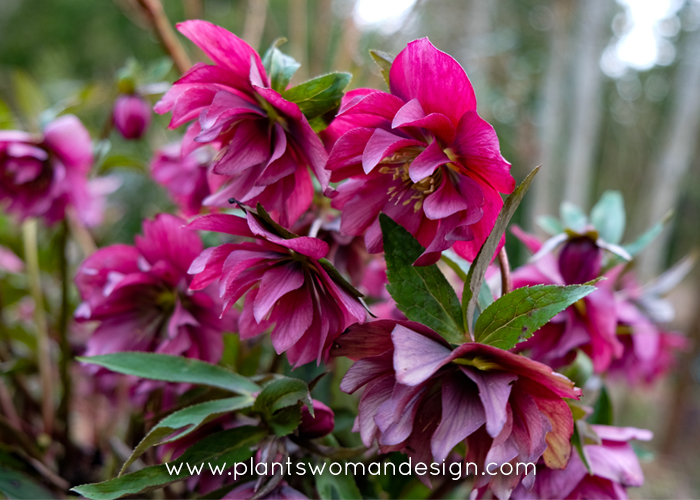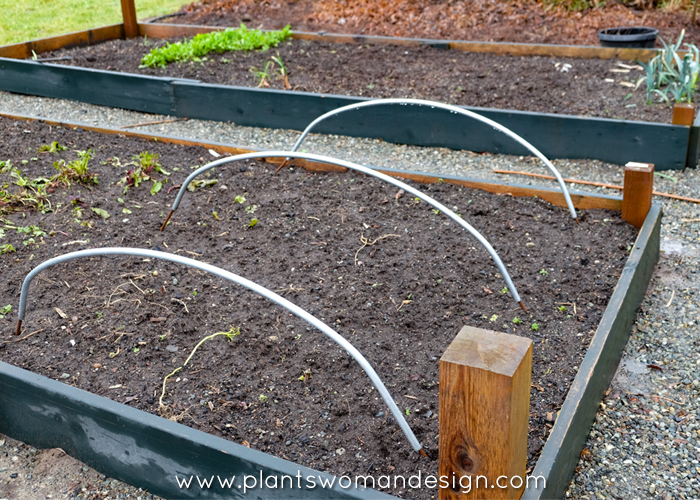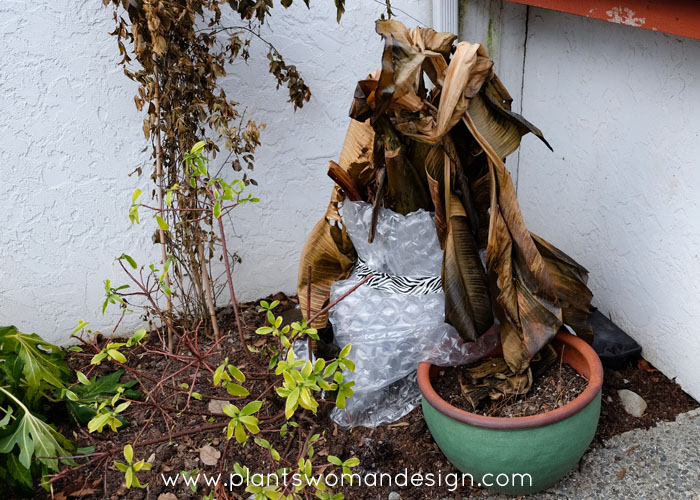
Growing In My Greenhouse
Often, I find myself loving a plant that is hard to find. I also really want to put unusual garden worthy plants into the designs I do. I started last year to grow some of the things I love to use in my own greenhouse. While I may not be an experienced grower, I can grow shrubs and trees that come to me as whips or bare root. Dividing my own perennials and seedlings are easy and can be a great addition to my designs.
This year I’ve started growing several trees in the greenhouse. They are small but easily transplanted after they fill out to the edges of the containers they are in.
One of my clients suggested I might make them available to purchase to all clients instead of keeping them for just design work. So, my private venture into growing is now available to anyone.
Here are a few of the lovely things in my greenhouse now…

All things Magnolia are wonderful. This year the one plant I couldn’t find was Magnolia Sunsation. I saw it at the Northwest Flower and Garden Show two years ago at full size and it was truly amazing. A sunny yellow with blush of orange/pink makes is ‘sunsational’. Zone 5 – 9, 20 – 30 feet high with 8 – 10 feet in spread. Grows best in sun or part shade. Perfect for a small garden.
Available in 5 gallon pots and are currently about 2 feet tall for $ 27.00
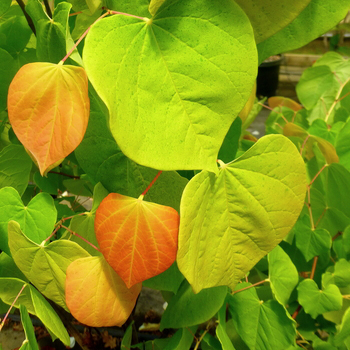
Cercis canadensis ‘The Rising Sun’ looks like the rising sun. Surprising name huh? I have grown this for 2 years and still love every aspect of it. From the early emerging yellow buds to the amazing fall color it is crazy cool. Soft yellow and peach combine as the leaves come out turning to green at full leaf. The process starts over again as the cool fall weather starts. Zones 6-9 growing in sun or part shade. Tiny pink flowers in early spring it grows into 10-15 feet tall with a spread of 10 -15 feet. Again, perfect for a small garden.
Available in 5 gallon pots and are currently about 3 feet tall for $35.00

Magnolia ‘Fairy Magnolia Cream’. Known sometimes as michelia this magnolia is a small structure evergreen Magnolia. It has an upright tidy habit with highly perfumed cream flowers. I originally purchased one from Cistus Nursery in Oregon. It was like a mini Magnolia grandiflora. The evergreen leaves have brown fuzzy indumentum on the back of the leaves and creamy fragrant flowers, similar to Magnolia grandiflora. This versatile shrubby tree can be used as a specimen or even hedged. Grows in zone 7b – 11 growing to 9 -12 feet in height and 7-9 ft in width. Happy with sun or shade does best with moderate moisture levels in the summer.
Available in 5 gallon pots and are currently about 3 feet tall for $25.00

Magnolia ‘Honey Tulip’ is another amazing magnolia with fabulous honey color on the blooms. It is actually a golden version of ‘Black Tulip’ with the same habits and goblet shaped flowers. Blooming in early spring on bare wood it loves a sunny position with protection from strong winds. Zone 5 -9, 20-30ft high and 8-10 feet in spread. Honey Tulips is a stunning little tree that begins flowering at an early age.
Available in 5 gallon pots and are currently about 2 feet tall for $80

Cornus capitata ‘Mountain Moon’ is, believe it or not, an evergreen Dogwood. Take everything you love about a dogwood and make it beautiful year-round. The creamy flowers cover the tree in mid spring and will take sun or light shade. It is tough enough to handle some wind and will grow to 30 feet tall eventually. Zones 8a or down to 15 degrees or less. This has been reliably hardy is many areas of the Puget sound. Slow growing it likes some water in the summer.
Available in 5 gallon pots and are currently about 2 feet tall for $30

Fagus sylvatica ‘Dawyck Gold’ is a beautiful golden beech tree. Being a narrow variety of beech it can be used as a specimen or in a hedge. Fagus is a traditional hedge in Europe. While not evergreen, it can be very twiggy so it remains a good hedge even when not in leaf. The Dawyck Gold has a great color that contrasts well with the plain variety. Good in zones 4-9 growing to 50 feet in height while maintaining a 6 – 15 ft width. It likes full sun to light open shade with regular water.
Fagus sylvatica Dawyck Gold in 5 gallon pots $33.00
Fagus sylvatica (larger variety but easy to keep hedged) in 5 gallon pots $12.00
I hope you enjoy looking these lovely plants up and discovering the new varieties that I’m adding to client gardens. I’m happy to share what is growing in the greenhouse now. I can also supply plants that are grown from other local growers if needed.
Happy Gardening!





